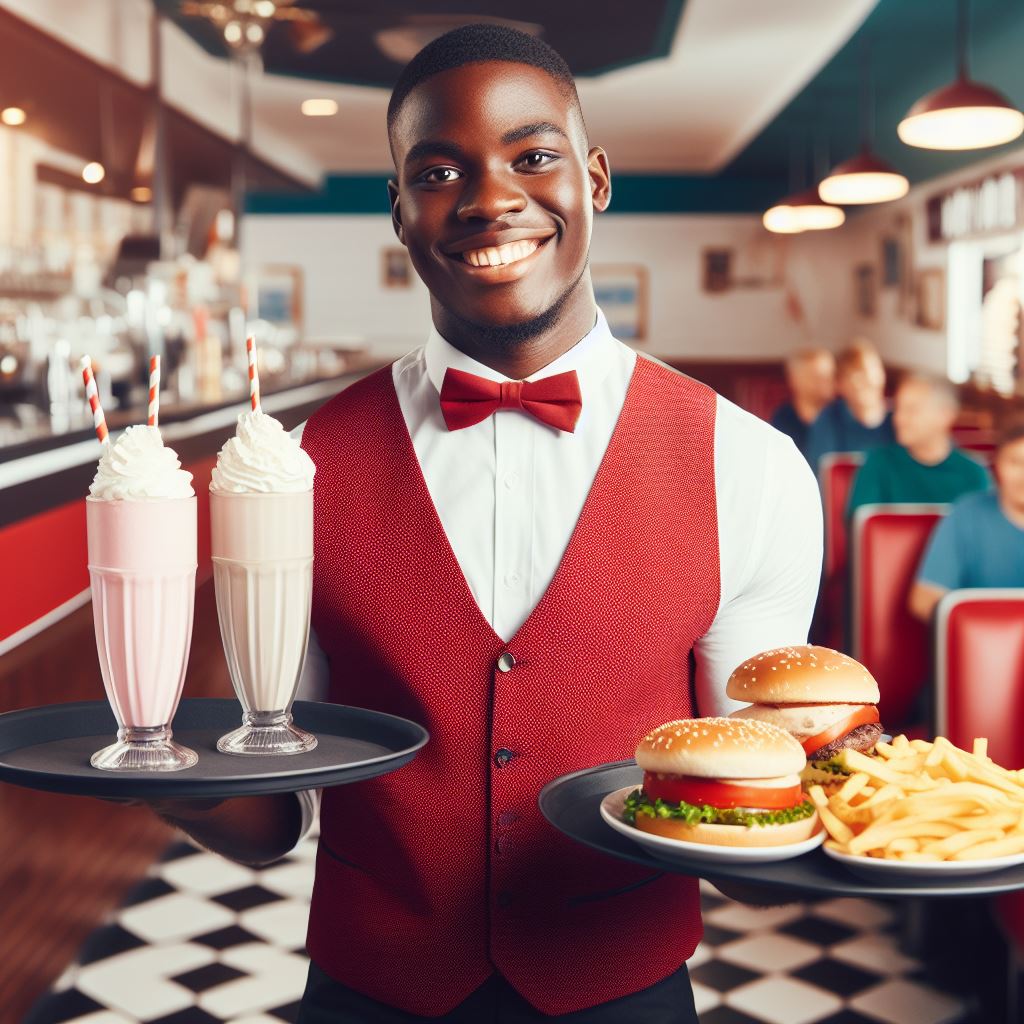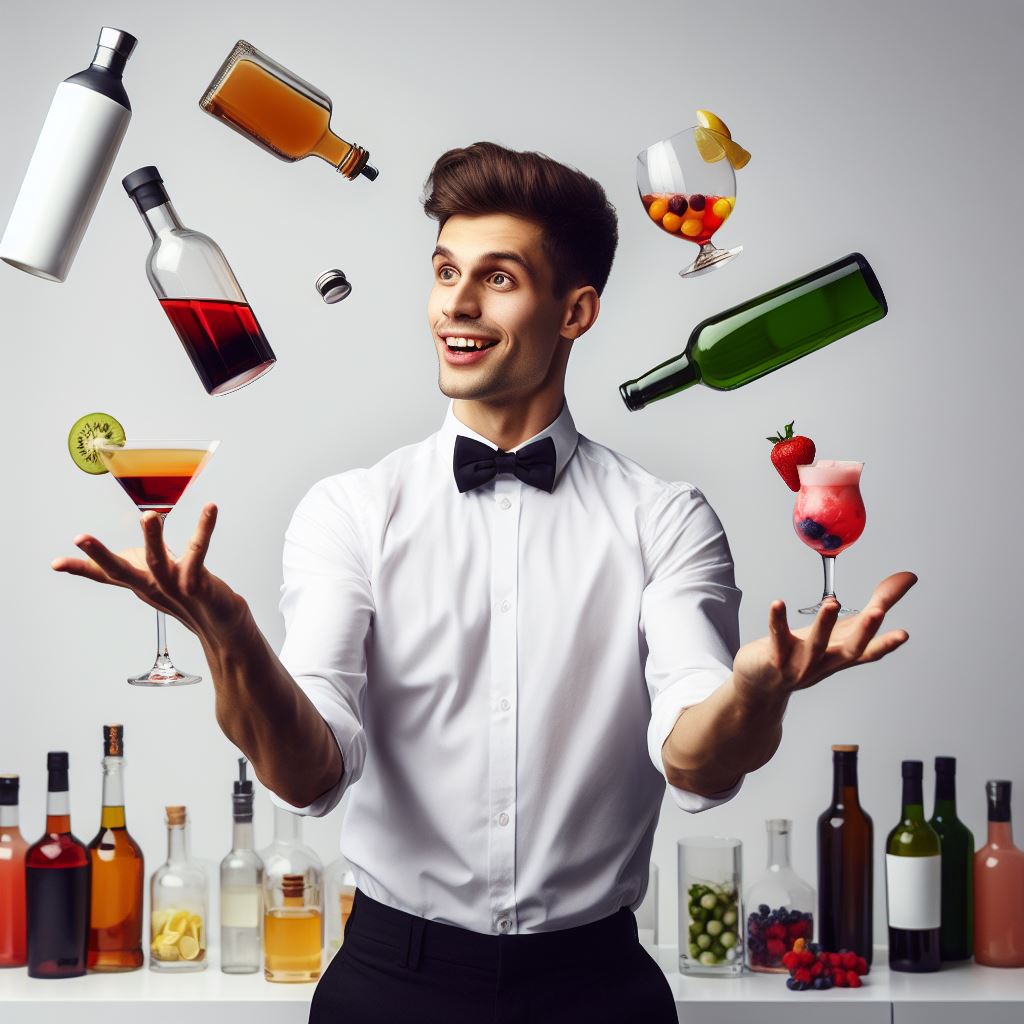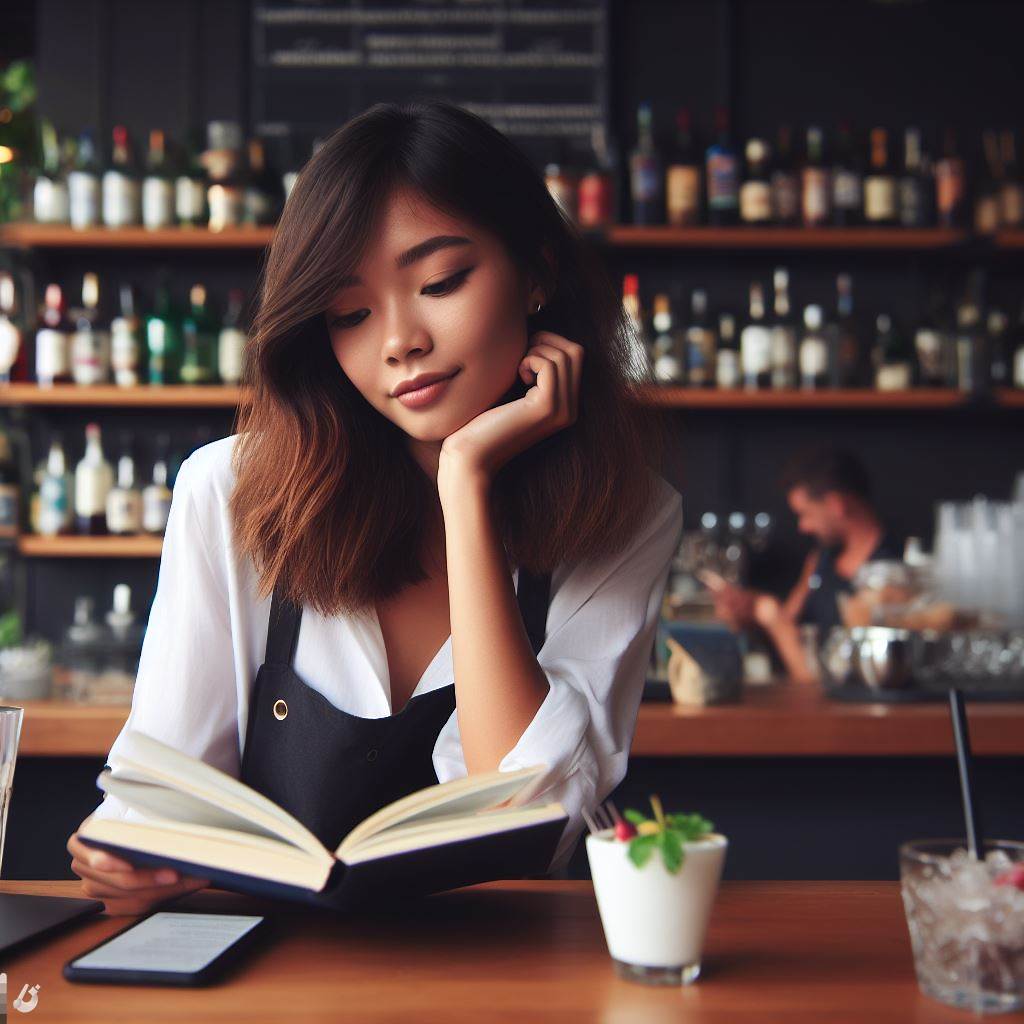Introduction
Bartending plays a significant role in American culture, evolving throughout the years. Initially, bartending was solely focused on saloons, where beer and spirits were served.
However, with the passing of time, bartending has expanded to include various types of establishments, such as pubs.
American culture has always appreciated the art of mixology, with bartenders considered craftsmen who provide more than just drinks.
They offer a sense of community, acting as listeners and confidants to their patrons. From celebrations to social gatherings, bartenders add an element of entertainment and hospitality.
Throughout history, bartending has undergone several transformations. In the early days, saloons were the primary social hubs, serving alcohol to minors, cowboys, and travelers.
As the country grew, so did the sophistication of bartending, with the emergence of cocktail bars that introduced mixed drinks and innovative concoctions.
Prohibition in the 1920s greatly impacted bartending, as speakeasies became clandestine establishments offering illicit drinks.
Bartenders became skilled at hiding their craft and creating innovative ways of serving alcohol without being caught. This era birthed iconic cocktails such as the Old Fashioned and the Sidecar.
After Prohibition ended, bars and taverns once again thrived. Bartenders experimented with new ingredients, creating signature drinks and attracting a diverse clientele.
The craft cocktail movement, which gained popularity in the 2000s, brought a resurgence of classic cocktails and a focus on using high-quality ingredients.
Today, bartending has evolved into an art form, with mixologists developing their own unique styles and flavors.
Modern bartending techniques include molecular mixology and the use of fresh, seasonal ingredients. Bartending has become an integral part of American culture, continuously evolving to cater to the changing tastes and preferences of consumers.
Early Origins of Bartending in the USA
Influence of European settlers
- European settlers brought their drinking traditions to the USA, including the concept of taverns.
- These settlers had a strong cultural fondness for alcohol, which influenced the early American drinking culture.
Introduction of taverns and alehouses
- Taverns and alehouses were established as social gathering places in the early American colonies.
- These establishments served as important meeting spots for the community, providing food, drink, and lodging.
- Bartenders played a vital role in running these taverns, serving patrons and ensuring a lively atmosphere.
Role of bartenders as providers of food and drink
- Bartenders in early American taverns not only served alcohol but also prepared and served meals.
- They acted as the main source of food and drink for travelers and locals alike.
- Bartenders were skilled in mixing drinks, ensuring that customers were satisfied with their libations.
Evolution of bartending techniques and practices
- As the USA developed, bartending techniques evolved, influenced by new ingredients and cultural trends.
- The introduction of distilled spirits led to the creation of new cocktails and mixed drinks.
- Bartenders began to experiment with different flavors, creating unique concoctions to please their customers.
Prohibition and its impact on bartending
- The era of Prohibition in the USA (1920-1933) dealt a heavy blow to the bartending industry.
- Bartenders were forced to adapt and find alternative means of employment, such as becoming soda jerks.
- Speakeasies emerged as underground venues where bartenders continued their craft discreetly.
Return of bartending after Prohibition
- With the end of Prohibition, bartending made a triumphant return, and bartenders regained their status as skilled professionals.
- Classic cocktails resurfaced, and bartenders showcased their expertise in creating unique and delicious drinks.
- Bartending schools and competitions began to flourish, further elevating the craft and recognizing bartenders as artists.
Modern trends and the renaissance of mixology
- In recent years, there has been a resurgence of interest in mixology and artisanal cocktails.
- Bartenders are now seen as culinary craftsmen, meticulously crafting drinks using fresh, high-quality ingredients.
- The art of mixology has become a form of self-expression, with bartenders creating signature cocktails that reflect their individual style.
Over the course of American history, bartending has evolved from simple tavern service to a sophisticated craft.
European settlers and their drinking traditions set the foundation for the industry, while bartenders played a vital role in providing food, drink, and hospitality.
Despite challenges like Prohibition, bartending has persevered and thrived, adapting to cultural shifts and embracing innovation.
Today, bartenders are celebrated for their creativity and skill, making the art of mixology an integral part of the American drinking culture.
Read: From Waiter to Owner: Success Stories in US Dining
Rise of Saloons in America
The rise of saloons in America can be traced back to the 19th century. During this time, the development of saloons played a crucial role in shaping American society.
Here are some key points to consider:
1. Development of saloons in the 19th century
- Saloons originated in the early 1800s as establishments that served alcohol and provided a gathering place for men.
- They were typically small, one-room establishments with a bar, tables, and sometimes a stage for entertainment.
- Saloons were commonly located near mining camps, railroad construction sites, and frontier towns.
2. Impact of the Gold Rush and westward expansion:
- The Gold Rush in the mid-1800s led to a significant increase in the number of saloons in America.
- The influx of miners seeking their fortunes created a demand for entertainment and socializing.
- As westward expansion continued, saloons became a staple in newly established towns and cities.
3. Cultural significance of saloons as social hubs:
- Saloons served as important social hubs in communities, providing a place for people to gather and socialize.
- They offered not only alcohol but also games, music, and sometimes even brothels.
- For many, saloons were a place to escape the hardships and monotony of everyday life, fostering a sense of camaraderie.
- Saloons served as meeting places for cowboys, miners, and other working-class individuals seeking companionship.
- They often had a lively atmosphere, with rowdy behavior and a sense of adventure prevailing.
- Saloons also played a role in politics, serving as venues for political debates and campaign gatherings.
- Bartenders, also known as mixologists, became an integral part of the saloon culture, concocting drinks to satisfy the patrons’ preferences.
- Popular beverages served in saloons during this era included whiskey, beer, and various types of cocktails.
- Drinking contests and card games were common forms of entertainment in saloons.
- The design of saloons usually featured wooden bars, ornate mirrors, and decorative bottles to create an inviting atmosphere.
- Women were initially excluded from saloons, but this changed over time as social norms evolved.
The rise of saloons in America during the 19th century had a profound impact on American society.
Transform Your Career Today
Unlock a personalized career strategy that drives real results. Get tailored advice and a roadmap designed just for you.
Start NowThese establishments provided a space for people to socialize, escape the hardships of frontier life, and engage in political discourse.
The legacy of saloons can still be seen today in the form of modern pubs and bars, which continue to serve as social hubs in communities across the country.
Read: Networking in Hospitality: Boosting Your Waiter Career
Prohibition Era and the Speakeasies
During the Prohibition Era, the ban on alcohol sales significantly influenced bartending in the USA.
This led to the emergence of illegal underground bars known as speakeasies, where bartenders played a crucial role in the covert alcohol trade.
- Profit Inhibition: Prohibition outlawed alcohol, directly impacting bartenders’ income due to the ban on legal sales.
- Secretive Societies: Speakeasies emerged to meet the demand, operating undercover, offering drinks behind closed doors.
- Hidden Establishments: Disguised as legitimate businesses, speakeasies were hidden in plain sight with secret entrances.
- Password Entry: Patrons needed secret passwords, adding exclusivity to the rebellious and exciting experience.
- Specialty Cocktails: Limited alcohol access spurred creativity, leading bartenders to craft unique cocktails like the sidecar.
- Rise of Organized Crime: Bartenders became valuable to organized crime, serving as suppliers and distributors during Prohibition.
- Bootlegging and Moonshining: Bartenders engaged in activities like bootlegging and moonshining, producing illegal alcohol.
- Mixology Expertise: Demand for skilled mixologists soared, prompting bartenders to perfect their craft during Prohibition.
- Flair and Showmanship: To attract customers, bartenders developed flair, entertaining with bottle juggling and intricate garnishes.
- Secretive Culture: Speakeasies fostered a unique sense of camaraderie, celebrating rebellion and the enjoyment of illicit pleasures.
- End of Prohibition: In 1933, Prohibition was repealed, marking the end of the ban on alcohol.
- Legacy and Influence: The era’s creativity, innovation, and mixology skills continue to shape the industry today. The legacy endures.
Read: Part-time vs. Full-time: Waitstaff Job Flexibility in USA

Delve into the Subject: How Holidays Affect a Waiter’s Paycheck in the USA
The 20th Century Cocktail Culture
The birth of the cocktail culture in the 1930s
The repeal of Prohibition in 1933 marked the beginning of the cocktail revival.
Bartenders and mixologists emerged from the shadows, ready to create new and exciting drinks.
The roaring twenties had paved the way for experimentation and innovation in the bartending scene.
Cocktail bars became popular social gathering places, attracting the fashionable crowd.
The cocktail culture of the 20th century was characterized by elegance, sophistication, and flair.
Classic cocktails such as the Martini, Manhattan, and Old-Fashioned gained popularity during this time.
Speakeasies, once illegal underground establishments, became trendy and sought-after destinations.
People were eager to explore the world of cocktails, appreciating the art of mixology.
Contributions of famous bartenders and mixologists
Harry Craddock, a renowned bartender at The Savoy Hotel in London, published the iconic “The Savoy Cocktail Book” in 1930.
Craddock is credited with popularizing many classic cocktails still enjoyed today.
Another influential figure was Dale DeGroff, who is often referred to as the “King of Cocktails.”
DeGroff’s expertise and creativity helped shape the modern cocktail renaissance.
Showcase Your Business Today
Reach thousands of readers actively exploring professional services. Publish your business profile and grow your audience now.
Publish NowBartenders like Jerry Thomas, Ernest Hemingway, and Frank Meier left lasting legacies in the cocktail world.
Their recipes and techniques continue to inspire bartenders and cocktail enthusiasts worldwide.
The influence of Hollywood and popular culture on cocktail trends
The glamour and allure of Hollywood stars brought attention to the cocktail culture.
Movies and celebrities in the 20th century often portrayed characters enjoying sophisticated drinks.
Cocktails became symbols of sophistication and style, associated with the upper class and luxury.
Classic movies like “Casablanca” and “Some Like It Hot” featured iconic cocktail scenes.
Prominent film stars like Marilyn Monroe and Humphrey Bogart popularized specific cocktails.
The influence of Hollywood extended beyond films; television shows also played a role.
Shows like “Mad Men” reignited interest in classic cocktails, sparking a nostalgic cocktail movement.
Lastly, the 20th century saw the birth of a vibrant cocktail culture that continues to thrive today.
The repeal of Prohibition allowed bartenders and mixologists to showcase their skills and creativity. Famous figures in the industry left a lasting impact, while Hollywood and popular culture helped shape cocktail trends.
The 20th century cocktail culture was a time of elegance, sophistication, and the art of mixology.
Read: Health & Safety Protocols for US Restaurant Workers
Modern Era: From Dive Bars to Craft Cocktails
In the modern era, the landscape of bartending in the USA has undergone significant changes.
Dive bars and neighborhood taverns have become popular, and there has been a resurgence of artisanal and craft cocktails.
Additionally, bartenders are now seen as skilled professionals and mixologists.
Introduction of Dive Bars and Neighborhood Taverns
Dive bars and neighborhood taverns emerged as popular establishments in the modern era.
These venues offered a more relaxed and casual atmosphere compared to traditional upscale bars.
Patrons sought a place where they could enjoy drinks with friends in a laid-back setting.
Dive bars and neighborhood taverns often had a loyal customer base within their local communities.
They became a hub for socializing, providing an escape from the hustle and bustle of everyday life.
The Resurgence of Artisanal and Craft Cocktails
Around the same time, there was a resurgence of interest in artisanal and craft cocktails.
These cocktails were meticulously crafted using high-quality ingredients and innovative techniques.
Renowned mixologists and bartenders began experimenting with unique flavor combinations.
Artisanal and craft cocktails provided a departure from the generic drinks found at many bars.
They became a symbol of sophistication and taste, appealing to a more discerning clientele.
Bartenders as Skilled Professionals and Mixologists
The rise of craft cocktails highlighted the skills and knowledge required to be a bartender.
Bartenders transformed into skilled professionals who could create complex and innovative drinks.
They honed their craft through education, attending mixology courses and workshops.
Mixologists, a term used to describe expert bartenders, became highly sought after in the industry.
Bartending competitions and awards recognized the talent and creativity of these professionals.
In summary, the modern era of bartending in the USA has brought about the popularity of dive bars and neighborhood taverns.
Additionally, there has been a revival of artisanal and craft cocktails, providing unique and sophisticated drink options.
Bartenders have emerged as skilled professionals, showcasing their expertise and creativity as mixologists.
This transformation in the bartending industry reflects the changing preferences and demands of patrons in the modern era.
See Related Content: Balancing Work and Life: A Retail Worker’s Guide in the USA
Conclusion
The history of bartending in the USA has evolved from saloons to pubs.
Bartenders continue to play an essential role in American society, serving as social connectors and providing a sense of community.
Bars and lounges hold great significance as social gathering places, where people come together to relax, socialize, and enjoy their favorite drinks.
Understanding the history and enduring importance of bartending helps to appreciate the unique role it plays in American culture.
Showcase Your Business Today
Reach thousands of readers actively exploring professional services. Publish your business profile and grow your audience now.
Publish NowNext time you visit a bar or lounge, take a moment to appreciate the rich history and the bartenders who contribute to its vibrant atmosphere.
[E-Books for Sale]
The Big Book of 500 High-Paying Jobs in America: Unlock Your Earning Potential
$19.99 • 500 High-Paying Jobs • 330 pages
Explore 500 high-paying jobs in America and learn how to boost your career, earn more, and achieve success!
See All 500 High-Paying Jobs of this E-Book
1001 Professions Without a Degree: High-Paying American Jobs You Can Start Now
$19.99 • 1001 Professions Without a Degree • 174 pages
Discover 1001 high-paying jobs without a degree! Unlock career tips, skills, and success strategies for just $19.99!




